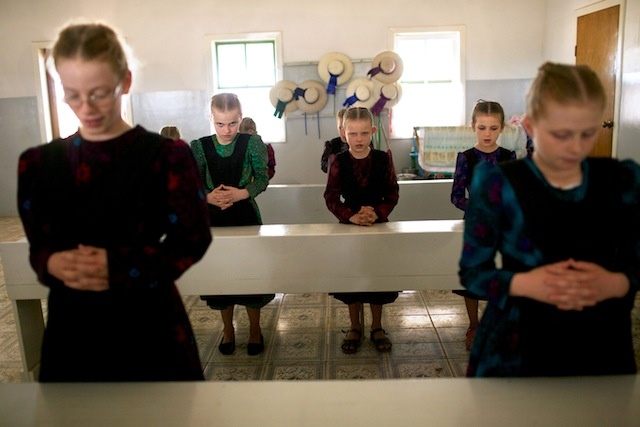 In “The Ghost Rapes of Bolivia,” a story that recently ran on Vice.com, Jean Friedman-Rudovsky reports on a series of rapes that took place in Manitoba Colony, Bolivia, as well as the reaction of the community. According to the story, some men were breaking into houses, drugging, and raping women who—apparently because of the drugs—could not remember the event.
In “The Ghost Rapes of Bolivia,” a story that recently ran on Vice.com, Jean Friedman-Rudovsky reports on a series of rapes that took place in Manitoba Colony, Bolivia, as well as the reaction of the community. According to the story, some men were breaking into houses, drugging, and raping women who—apparently because of the drugs—could not remember the event.
Throughout the community, people were waking to the same telltale morning signs: ripped pajamas, blood and semen on the bed, head-thumping stupor. Some women remembered brief moments of terror: for an instant they would wake to a man or men on top of them but couldn’t summon the strength to yell or fight back. Then, fade to black.
The response by civil leaders was apparently disinterest, doubt, and—after the rapists were caught—an attempt to block state funded psychologists from being sent to the community to counsel the victims.
What is of particular interest to the author is the Mennonite identity of the community. In fact, the amount of space devoted in the article to the Mennonite identity seems to imply that it is fundamental to understanding these events and the community’s response to them. However, at no point does the author show any sort of direct relation between their Mennonite identity and the behavior of either the rapists or the community leaders.
Much like in Jon Krakauer in Under the Banner of Heaven, when the narrator can’t make any direct connection between the community’s identity and the behavior of its inhabitants, he or she manages to imply a connection simply by interweaving mention of the identity and the behavior. These people are Mennonite—they raped—they’re Mennonite—they didn’t help the victims—oh, and did I mention they’re Mennonites?
Beyond that, the description of what happened could have come out of a report on what apparently happens on some American college campuses; there have been a number of high profile cases in the last few years where college administrations downplayed rape or suppressed rape reporting. That this particular community identifies as Mennonite is not obviously relevant, any more than it would be relevant that some rapist or administrator on a college campus were also Democrats. But we could (rhetorically) establish a connection by using the same narrative frame: he’s a Democrat—he raped—he’s a democrat—he suppressed the rape report—etc. In sum, a weaving mentions of identity with accounts of behavior can rhetorically establish a connection or even a presumed explanation (i.e., he did this because he’s X).
While this community’s response to the rapes was, in my opinion, reprehensible, it’s not clear to me that their Mennonite identity sheds light on the events at hand. And, in fact, it’s quite possible that the emphasis on that identity obscures or prevents us from investigating the social practices and habits—unrelated to Mennonite identity—that may have contributed to these events.
